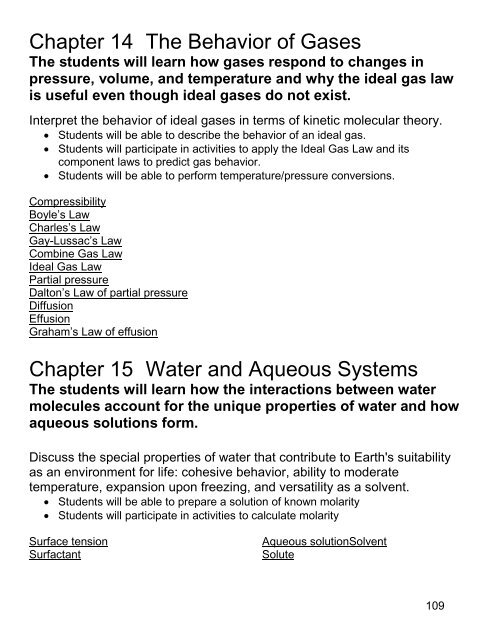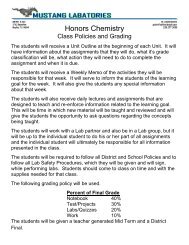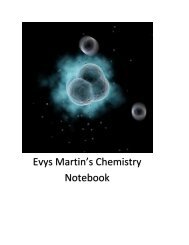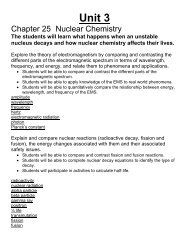Create successful ePaper yourself
Turn your PDF publications into a flip-book with our unique Google optimized e-Paper software.
Chapter 14 The Behavior of Gases<br />
The students will learn how gases respond to changes in<br />
pressure, volume, and temperature and why the ideal gas law<br />
is useful even though ideal gases do not exist.<br />
Interpret the behavior of ideal gases in terms of kinetic molecular theory.<br />
Students will be able to describe the behavior of an ideal gas.<br />
Students will participate in activities to apply the Ideal Gas Law and its<br />
component laws to predict gas behavior.<br />
Students will be able to perform temperature/pressure conversions.<br />
Compressibility<br />
Boyle’s Law<br />
Charles’s Law<br />
Gay-Lussac’s Law<br />
Combine Gas Law<br />
Ideal Gas Law<br />
Partial pressure<br />
Dalton’s Law of partial pressure<br />
Diffusion<br />
Effusion<br />
Graham’s Law of effusion<br />
Chapter 15 Water and Aqueous Systems<br />
The students will learn how the interactions between water<br />
molecules account for the unique properties of water and how<br />
aqueous solutions form.<br />
Discuss the special properties of water that contribute to Earth's suitability<br />
as an environment for life: cohesive behavior, ability to moderate<br />
temperature, expansion upon freezing, and versatility as a solvent.<br />
Students will be able to prepare a solution of known molarity<br />
Students will participate in activities to calculate molarity<br />
Surface tension<br />
Surfactant<br />
Aqueous solutionSolvent<br />
Solute<br />
109








